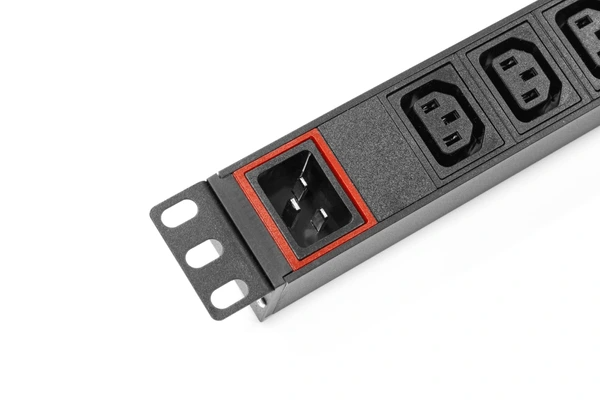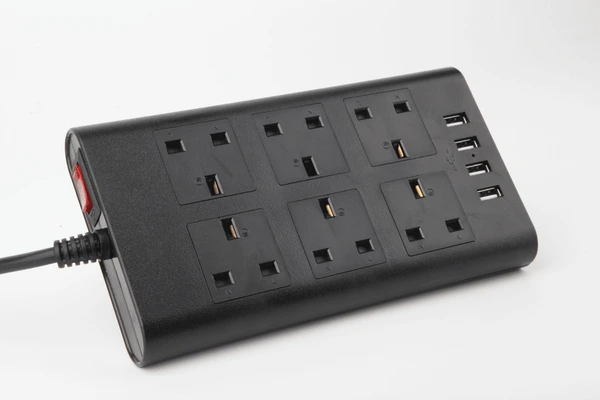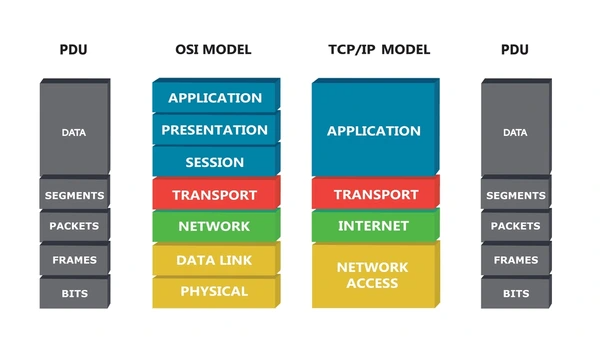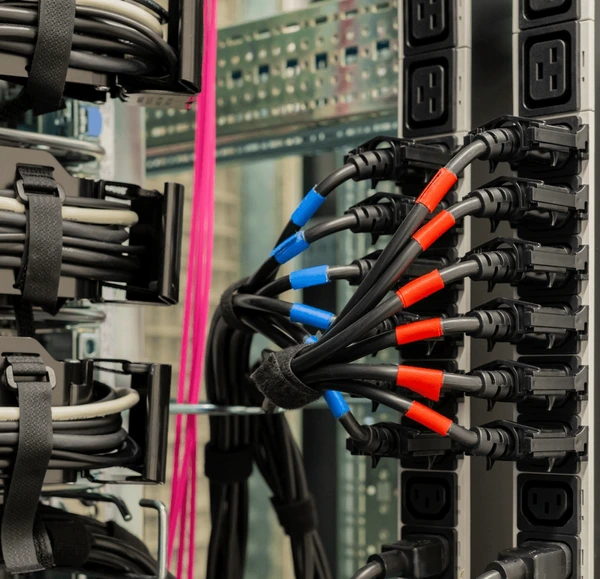
What is a Power Distribution Unit (PDU)?
A Power Distribution Unit (PDU) is a key device used in data centers and electronic equipment racks to manage and distribute electrical power. PDUs ensure that multiple devices receive the right amount of power efficiently and safely. They help organize power distribution, making it easier to maintain and monitor the electrical needs of connected equipment. This article will explore the different types of PDUs, their features, and how to choose the right one for your setup.

How Does a Power Distribution Unit Work?
PDUs take power from the rack’s main power source (usually branch circuits) and distribute it to various outlets. They don’t generate or condition power; they simply manage the flow from one input to multiple outputs. This helps ensure all devices in the rack receive reliable power.
Types of Power Distribution Units: Basic, Intelligent, and Metered
- Switched PDUs
Switched PDUs give users remote control over their outlets. This allows you to turn outlets on or off from a central location, improving power management. - Monitored PDUs
Monitored PDUs provide real-time data on power consumption and environmental conditions. This helps track the health of connected devices and ensures efficient operation. - Metered PDUs
Metered PDUs measure power usage for each outlet. They display detailed insights into energy consumption, helping you optimize power efficiency.

Why Businesses Use PDUs for Energy Efficiency
- Reliability
PDUs provide a consistent power supply to critical equipment, reducing the risk of downtime and maintaining smooth operation. - Efficiency
With remote power management, PDUs help optimize power usage. This reduces waste and improves overall energy efficiency. - Safety
Many PDUs include overcurrent protection and surge suppression. These features protect connected devices from potential damage. - Scalability
PDUs can easily scale to support more devices. This flexibility helps accommodate growing infrastructure needs as your setup expands.
Common Applications of PDUs in Data Centers and Enterprises
PDUs are widely used in various settings, including:
- Data centers
- Server rooms
- Telecommunications facilities
- Industrial environments
- Medical facilities

Benefits of Using a PDU in IT and Data Center Environments
- Power Distribution
PDUs distribute electrical power from a single source to multiple devices, such as servers and network equipment. They offer a centralized point for managing power across data centers or enterprise networks. - Power Monitoring and Management
Modern PDUs feature real-time power tracking for both input and output. This helps identify energy-efficient practices and optimize consumption. - Environmental Control
Some PDUs include sensors that monitor temperature and humidity levels. These sensors help maintain optimal conditions for sensitive equipment and ensure quick responses to any environmental changes. - Redundancy and Fault Tolerance
In critical environments, PDUs provide redundant power sources to maintain continuous operation. Features like static transfer switches (STS) and dual inputs ensure power supply during a failure. - Space and Rack Optimization
PDUs are often rack-mounted to maximize space in data centers. This allows for efficient power distribution, essential for high-density computing setups. - Asset Management and Identification
Advanced PDUs integrate with asset management systems to track connected devices. This improves inventory control and ensures proper power allocation based on the devices’ needs.. - Scalability and Flexibility
PDUs are scalable to meet changing power demands. They allow businesses to easily add or remove outlets as their infrastructure expands.

Application Cases
| Product/Project | Technical Outcomes | Application Scenarios |
|---|---|---|
| Per Outlet Residual Current Monitoring PDUs Server Technology, Inc. | Integrating residual current monitoring circuits with sensors and differential detectors per outlet allows precise identification of leakage sources, reducing downtime and electrical hazards. | Data centers requiring pinpoint fault isolation to enhance safety and uptime. |
| Combination Outlet PDUs Legrand DPC LLC | Adaptable T-shaped outlets accommodate multiple connector types, reducing variant needs and enhancing flexibility and spare part management. | Data centers with diverse equipment needing streamlined power distribution. |
| Power Usage Monitoring PDUs Server Technology, Inc. | Aggregating power usage data from rack-mounted PDUs enables real-time monitoring and optimization of power distribution across feed circuits. | Data centers facing inefficiencies and overheating issues due to unbalanced power distribution. |
| Power Distribution Boxes Hewlett Packard Enterprise Development LP | Pre-configured PDU whips and circuit breakers simplify power distribution to multiple rack PDUs, reducing installation costs and time. | Data centers requiring efficient power provisioning during setup or expansion. |
| Cabinet Level Controller Cyber Switching Patents LLC | Integrates power monitoring and RFID asset tracking, enabling efficient management of data center power consumption and equipment. | Data centers needing centralized control over power utilization and asset tracking. |
Market Trends
The demand for efficient power distribution in data centers is driving the growth of the market. As rack densities increase, the need for advanced solutions rises. With technology advancing, the market will continue to expand, offering smarter and more efficient power distribution options.
Conclusion
In conclusion, PDUs play a key role in modern power distribution. They offer reliability, efficiency, and scalability across various applications. With the ability to monitor and manage power usage, PDUs are essential in today’s data-driven world.
To get detailed scientific explanations of PDU, try Patsnap Eureka.

